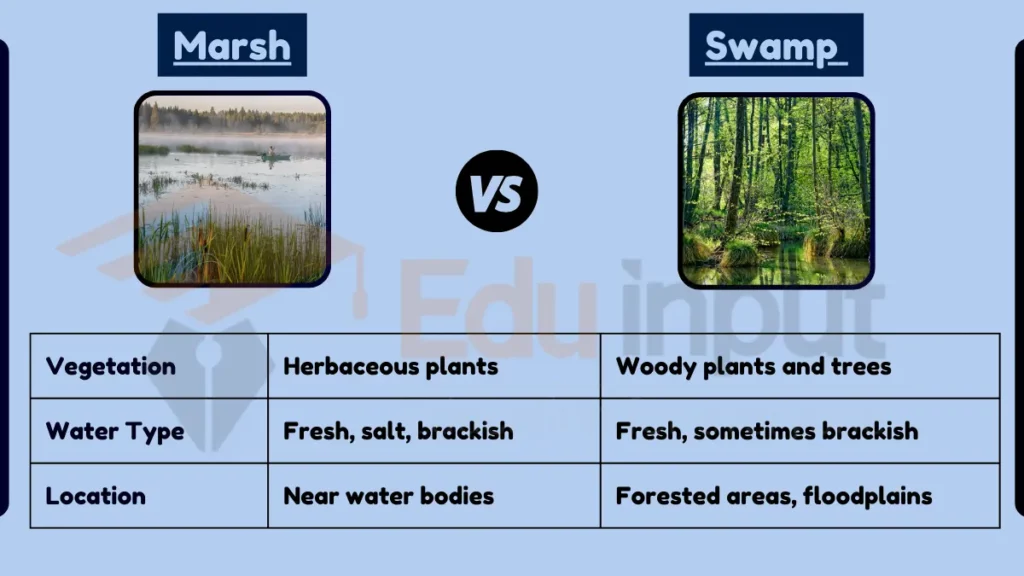Difference Between Marsh and Swamp
Key Difference
Marshes and swamps are both types of wetlands, ecosystems that are saturated with water, but they differ in their vegetation and water characteristics. Marshes are wetlands that are primarily dominated by herbaceous (non-woody) plants, such as grasses and reeds. They are often found near lakes, rivers, or coastlines and can have either fresh, brackish, or salt water. Swamps, on the other hand, are characterized by their ability to support woody plants and trees, like mangroves or cypress trees. Swamps typically have slow-moving water and can be found in forested areas. The water in swamps is usually fresh but can also be brackish in coastal areas.

Comparative Analysis
- Vegetation:
- Marsh: Primarily herbaceous plants like grasses and reeds.
- Swamp: Woody plants and trees like cypress and mangroves.
- Water Type:
- Marsh: Can be fresh, salt, or brackish.
- Swamp: Mainly fresh water, sometimes brackish.
- Location:
- Marsh: Often found near bodies of water like rivers, lakes, or coasts.
- Swamp: Typically in forested areas or floodplains.
- Soil Conditions:
- Marsh: Waterlogged soils with more open water areas.
- Swamp: Mucky, soft soil, often inundated with water.
- Ecological Importance:
- Both: Important for biodiversity, flood control, water purification.
Table Summary
| Feature | Marsh | Swamp |
|---|---|---|
| Vegetation | Herbaceous plants | Woody plants and trees |
| Water Type | Fresh, salt, brackish | Fresh, sometimes brackish |
| Location | Near water bodies | Forested areas, floodplains |
| Soil | Waterlogged, open water | Mucky, inundated with water |
| Ecological Role | Biodiversity, flood control | Same as marsh |
Marshes and swamps are vital wetland ecosystems that provide habitat for diverse wildlife and play significant roles in water purification and flood control. The primary distinction between them lies in the type of vegetation they support and their typical locations. Marshes are characterized by grassy, herbaceous plants, while swamps are distinguished by their woody vegetation and tree cover. Understanding these differences is crucial for environmental conservation and the study of wetland ecosystems.



Leave a Reply